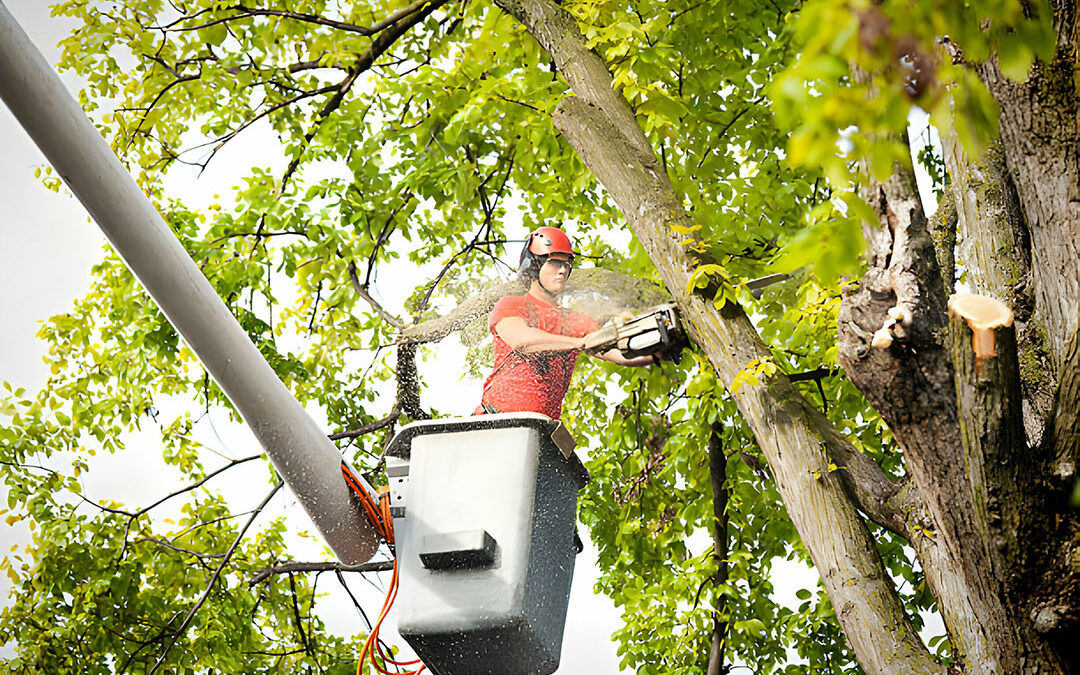Monitoring your trees for signs of stress is essential for their overall well-being. Look for unusual leaf discoloration, dead or decaying branches, excessive leaf drop, cracks or cavities in the trunk, visible fungi or mold, sparse or thinning canopy, insect infestations, root damage, and changes in tree growth. Addressing these indicators promptly helps maintain tree health and preserve the beauty of your landscape.
Unusual Leaf Discoloration
Observing unusual leaf discoloration on your trees can be an early indicator of underlying issues that may require professional tree service intervention. Leaf wilting and pest infestation are common causes of such discoloration. If you notice leaves yellowing, it could signify a nutrient deficiency in the tree.
Wilted leaves may be a sign of water stress or disease. Pest infestations can also lead to discoloration as insects feed on the leaves, disrupting their normal functions. Identifying the specific cause of the discoloration is crucial in determining the appropriate treatment. Consulting with a certified arborist can help accurately diagnose the issue and recommend the best action to restore your tree’s health and vitality.
Dead or Decaying Branches
Dead or decaying branches on trees can indicate potential hazards and underlying issues requiring prompt attention from qualified service professionals. Pruning techniques are crucial in managing dead or decaying branches to prevent safety risks and improve the tree’s overall health.
Proper pruning practices involve cutting branches at the correct angle and location to promote healing and minimize the spread of diseases. Regular pruning also aids in enhancing the tree’s structural integrity and appearance.
Removing dead or decaying branches is essential for disease prevention, as these areas can attract harmful pests and pathogens that may spread throughout the tree. Therefore, timely identification and professional handling of dead or decaying branches are vital for maintaining the health and safety of your trees.
Excessive Leaf Drop
Experiencing a significant increase in leaf drop beyond the usual seasonal shedding can indicate underlying issues affecting your trees’ health and vitality. Monitoring soil moisture levels is crucial as excessive dryness and waterlogging can lead to increased leaf drop.
Dry soil can stress trees, causing them to drop leaves prematurely, while overly wet soil can suffocate the roots, leading to leaf loss. Environmental stressors such as extreme temperatures, pollution, or lack of sunlight can also contribute to excessive leaf drop.
Addressing these issues promptly is essential to preventing further damage and ensuring the overall health of your trees. By understanding the potential causes of excessive leaf drop, you can take proactive measures to support your trees’ well-being.
Cracks or Cavities in Trunk
Noticing cracks or cavities in the trunk of your trees can indicate potential structural weaknesses that may compromise their stability and overall health. These issues can arise from various factors, such as physical damage, disease, or pest infestations. It is crucial to address these signs promptly to prevent further damage and ensure the tree’s longevity.
Regular tree inspection and care are essential to maintaining tree health and identifying problems early on. If you observe cracks or cavities in your tree trunk, consider seeking professional arboricultural advice to assess the extent of the damage and determine the best course of action. Timely maintenance and appropriate interventions can help mitigate risks and preserve the health of your trees.
Visible Fungi or Mold
The presence of visible fungi or mold on your trees’ surface can indicate underlying issues affecting their health and vitality. Fungi on trees can manifest in various forms and colors, such as powdery mildew or shelf-like brackets, and their identification is crucial in determining the appropriate treatment.
To prevent fungi growth, ensure proper tree maintenance practices, including adequate watering, pruning, and mulching. If fungi are already present, prompt action is necessary to prevent further damage. Mold on trees, often appearing as a fuzzy or slimy layer, requires careful removal and treatment to avoid spreading and potential harm to the tree. Implementing proper sanitation measures and improving air circulation around the tree can aid in mold prevention and control.

